More about Artemisia Gentileschi
- All
- Info
- Shop
Works by Artemisia Gentileschi

Sr. Contributor
No challenge, trauma, or man could stop Artemisia Gentileschi from becoming an exceptional artist and feminist icon.
Artemisia Gentileschi grew up in Rome with her father Orazio and her three younger brothers during the seventeenth century. Orazio was an esteemed Mannerist painter who was trying to master his work-life balance as a widower and single parent. His solution was to stick the four Gentileschi kids in the back of his studio, give them paper, paint, and brushes, and let them give it a go. Orazio desperately wanted his studio to become a Gentileschi & Sons, but he quickly realized that his daughter was the true star. Artemisia was a painting prodigy. She was particularly drawn to the work of Caravaggio and intently studied the Baroque master’s dramatic use of light and his energetic group scenes. Adopting these techniques, Gentileschi began developing her own artistic style at a very young age and produced her first major artwork, Susanna and the Elders, when she was only seventeen years old.
But before her career could really get started, Artemisia suffered a terrible, life-changing event. On May 6, 1611, Agostino Tassi, a peer of Orazio, arrived at the Gentileschi studio to find the young artist working at her easel unchaperoned. Based on Artemisia’s account of the incident, Tassi entered the studio, knocked the paintbrushes and palette from her hands, covered her mouth with a cloth to silence her screams, and raped her. Artemisia fought back by scratching at Tassi’s face, pulling his hair, and cutting him with a knife, but she could not escape his grasp.
When Orazio found out about the rape he saw it as an attack on the Gentileschi family’s honor and brought Tassi to trial. During the eight-month trial, Artemisia was interrogated just as harshly as Tassi. She was tortured with a sibille, a device where the fingers are wrapped with cords that are progressively pulled tighter and tighter, to test her truthfulness. Artemisia never faltered and Tassi was found guilty.
To save Artemisia from further scandal, Orazio quickly arranged a marriage between his daughter and the artist Pierantonio di Vincenzo Stiattesi. The newlyweds relocated to Florence where she was able to prosper as a successful artist and independent woman. Between 1612 and 1620, Gentileschi learned to read and write, received countless commissions from the elite, became the first female artist to be accepted into the Florentine Academy of Fine Arts, and developed an impressive social circle that included great patrons like the Medici family and great thinkers like Galileo Galilei.
However, the success of Gentileschi's professional life did not transfer over to her marriage. Pierantonio was an unfaithful shopaholic who brought shame and debt to the family. Taking a page from her husband’s book, Gentileschi developed her own passionate love affair with a Florentine local which lasted for most of her marriage. To top it all off, they had five children, but only one survived into adulthood. The pair could never quite catch a break and, in 1623, Gentileschi and Pierantonio separated, leaving Gentileschi with the responsibility of raising their surviving daughter.
With all of this pain and suffering at the hands of men, it's not surprising that many of Gentileschi’s artworks feature a “femme forte,” or a strong, empowered woman. By painting Biblical and classical stories of women who were taken advantage of, Gentileschi captures her cynicism, fury, and distrust towards the opposite sex. These “revenge paintings” are some of her most well-known works, but they make up less than a quarter of her oeuvre. It has been over 400 years since the rape of Artemisia Gentileschi, but that event still defines how historians interpret her art. We must revere her for who she was beyond Tassi's crime: a determined single mom and full-time businesswoman who followed her dreams, took no sh*t, and made history.
Sources
- “Artemisia Gentileschi.” The National Gallery. Accessed March 20, 2021. https://www.nationalgallery.org.uk/artists/artemisia-gentileschi.
- “Artemisia’s rape trial.” The National Gallery. Accessed March 20, 2021. https://www.nationalgallery.org.uk/exhibitions/past/artemisia/artemisia….
- Lowry, Elizabeth. “No Man Could Stop Her: The Life and Work of Artemisia Gentileschi, a Dazzling Celebrity of the European Baroque.” Times Literary Supplement, no.6134 (2020): 14-15.
- O’Neill, Mary. “Artemisia’s Moment.” Smithsonian Magazine, May 2002. https://www.smithsonianmag.com/arts-culture/artemisias-moment-62150147/.
Featured Content
Here is what Wikipedia says about Artemisia Gentileschi
Artemisia Lomi Gentileschi (
US: /ˌdʒɛntɪˈlɛski, -tiːˈ-/ JEN-til-ESK-ee, -teel-;
Italian: [arteˈmiːzja ˈlɔːmi dʒentiˈleski]; 8 July 1593 – after January 1654) was an Italian Baroque painter. Gentileschi is considered among the most accomplished 17th-century artists, initially working in the style of Caravaggio. She was producing professional work by the age of 15. In an era when women had few opportunities to pursue artistic training or work as professional artists, Gentileschi was the first woman to become a member of the Accademia di Arte del Disegno in Florence and she had an international clientele. Gentileschi worked as an expatriate painter in the court of Charles I of England from 1638 to 1642, but she is thought to have fled the country in the early phases of the English Civil War. Her whereabouts over the following years are unknown, but she resurfaced in Naples during 1649. Her last known letter to one of her mentors was dated to 1650 and it indicates that she was still working as an artist. Her time of death is disputed, but her last known commission was in January 1654.
Many of Gentileschi's paintings feature women from myths, allegories, and the Bible, including victims, suicides, and warriors. Some of her best-known subjects are Susanna and the Elders (particularly 1610 version in Schloss Weißenstein, Pommersfelden), Judith Slaying Holofernes (her 1614–1620 version is in the Uffizi gallery), and Judith and Her Maidservant (her 1625 work is in the Detroit Institute of Arts).

Gentileschi was known for being able to depict the female figure with great naturalism and for her skill in handling colour to express dimension and drama.
Her achievements as an artist were long overshadowed by the story of her rape at around 18 years old by Agostino Tassi and her being tortured to give evidence during his subsequent trial. For many years Gentileschi was regarded as a curiosity, but her life and art have been reexamined by scholars in the 20th and 21st centuries, with the recognition of her talents exemplified by major exhibitions at internationally esteemed fine art institutions, such as the National Gallery in London.
Check out the full Wikipedia article about Artemisia Gentileschi

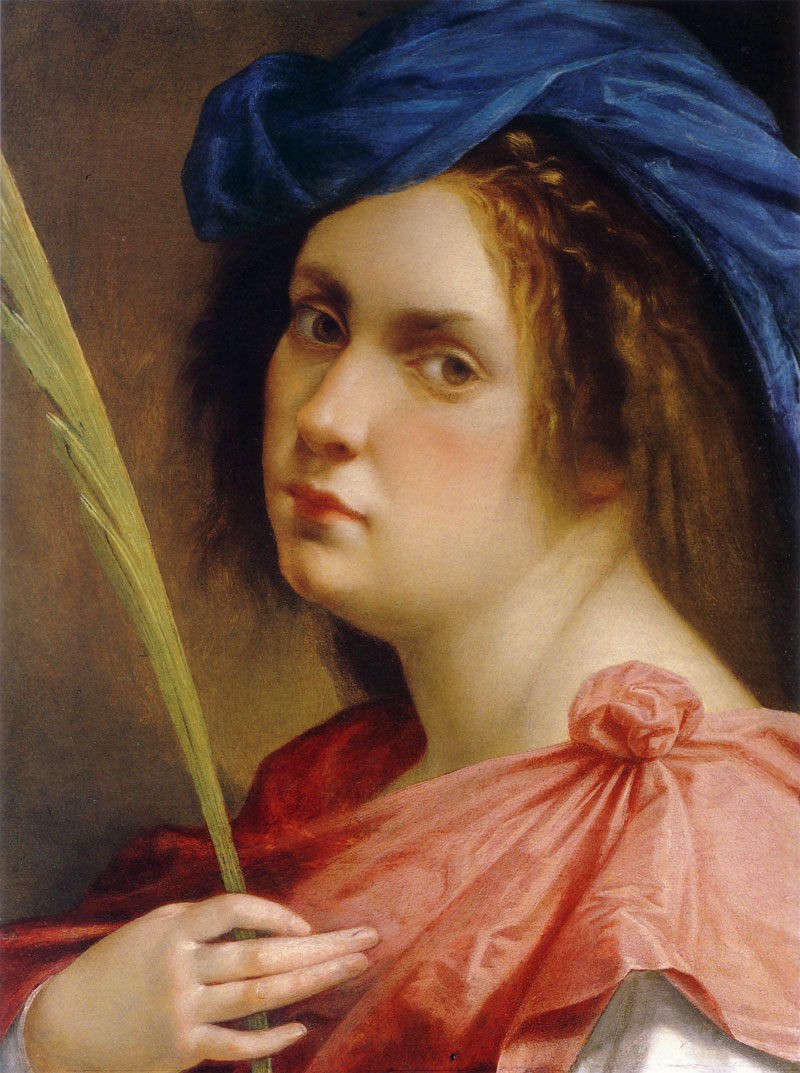
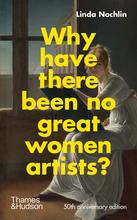
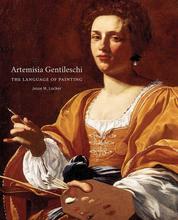
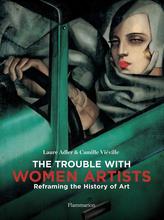
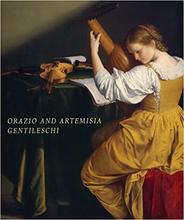
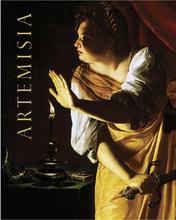
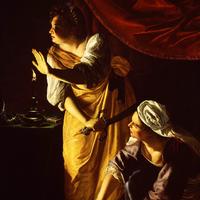
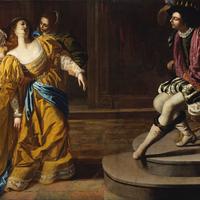
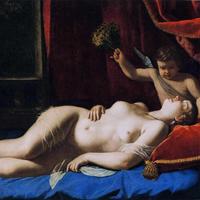
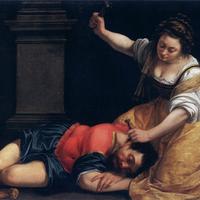
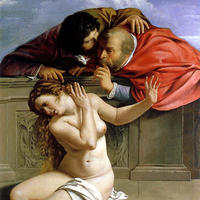









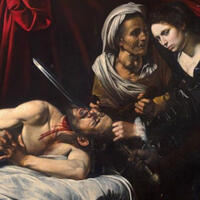


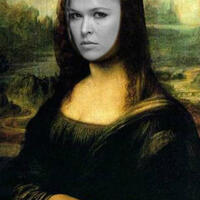
Comments (2)
So Gentileschi was not so gentle? Good for her.